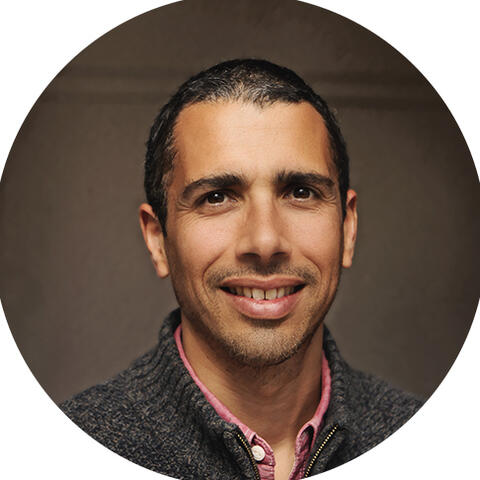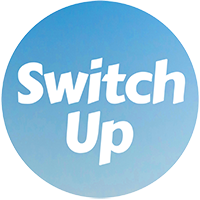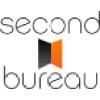Abstract:
The article advocates for a values-focused approach to building a tech career, encouraging professionals to move away from the overwhelming hustle of saying yes to every opportunity and instead curate a portfolio of work that aligns with personal priorities, autonomy, and real impact. Drawing on research, frameworks like Ikigai, and examples from figures such as Swizec Teller and Cassidy Williams, it emphasizes selecting roles and projects that support a cohesive, satisfying life rather than mere busyness. The author shares a personal transition from a fast-paced Berlin start-up to a slower, more intentional lifestyle in Lisbon, where work is chosen to fit around activities like gardening and carpentry, reinforcing the value of integrating personal well-being into career decisions. The article highlights the benefits of synergy across carefully chosen projects, the importance of regular self-assessment, and the power of setting boundaries and saying no to misaligned opportunities, illustrated by real-world examples like Tristan Harris and Ellen Ullman. Ultimately, it argues that redefining success through autonomy, value alignment, and ongoing learning leads to greater fulfillment, less burnout, and a career that adapts to changing life seasons—demonstrating through both research and lived experience that minimalist, purpose-driven portfolios can foster both professional and personal growth.
You’re not alone if your career feels like a rag-tag mix of projects. Many tech folks say yes to everything at first, hoping that a packed calendar will bring security. I used to worry about losing relevance outside big organizations, and the isolation sometimes felt overwhelming. Soon the hours blur, energy slips, and purpose fades. Anxiety about stability creeps in, and frustration with rigid corporate structures can make even the most exciting projects lose their spark.
The alternative is a values-focused portfolio. It’s not just about cutting hours; it’s about picking work that fits the life you want—one that gives room for autonomy, creativity, and real impact. With honest self-checks, clear limits, and stories from people who traded constant grind for thoughtful choices, the next sections show how scattered hustle can turn into a steady, satisfying path.
From random hustle to a values-focused portfolio
Curating purposeful work streams
It’s common to start with a jumble of gigs, chasing every offer that lands in the inbox. After a while, the shine fades and overwhelm moves in. Minimalism offers a reset. Instead of collecting every task, tech minimalists filter work through a simple test: does this align with personal values and long-term goals? I’ve found that choosing roles for autonomy and variety leads to better results than just chasing volume. The change might look small from the outside, yet it marks the shift from a patchwork of tasks to a career with a clear design.
For me, the biggest change came after moving from a fast Berlin scale-up to the slower rhythm of Lisbon. Projects now have to fit a life that values quiet evenings and room for side hobbies, which is not always easy, but c’est la vie. Aligning work with what matters brings more relief than any new contract ever did.
Building synergy across projects
When roles are chosen with care, work streams start to help each other out instead of fighting for time. Common patterns:
- Teaching strengthens consulting by sharpening explanations.
- Open-source work sparks new collaborations and builds credibility for paid gigs.
- Writing about tech topics attracts clients, as seen with Swizec Teller’s mix of contracting, blogging, and teaching.
- Community leadership often leads to speaking invites and freelance offers.
Work turns from an endless to-do list into a small ecosystem where each part supports the rest.
Less fragmentation, more identity
This integrated approach does more than tidy up a calendar. There’s less mental noise and a stronger sense of self. I’ve noticed that each aligned role reinforces my sense of identity instead of pulling it apart. Focusing on fewer, higher-impact projects cuts burnout and lifts satisfaction. The relief of not being stretched in every direction is real—there’s a calm that comes from knowing your work reflects who you are, not just what you can do.
Real-world integration in action
- Cassidy Williams blends advocacy, community work, and personal projects in a way that feels both useful and rewarding.
- Saron Yitbarek pairs podcasting with community projects, choosing only what supports well-being.
Lisbon gave me a needed slowdown. New work fits around gardening, quiet dinners, and a bit of carpentry. Projects come second to lifestyle priorities, making the portfolio both stronger and more enjoyable. Blocking Friday mornings for carpentry not only boosted my focus during the week but also gave me a sense of accomplishment outside work.
Value-driven portfolio design
Clarifying personal priorities
A satisfying portfolio starts with knowing what matters. Tools like the Barrett Personal Values Assessment or plain journaling can reveal core drivers such as flexibility, autonomy, or social impact. When I mapped my roles using the Ikigai framework, I realized that my side projects aligned best with my passion for teaching and tech, which led me to prioritize them. Seeing these drivers clearly made decisions less stressful and gave me a sense of agency over my own path.
Frameworks help convert insight into action. Ikigai pinpoints where passion, skill, and need meet, while Career Anchors highlights what makes daily work feel right. Design thinking tools like Odyssey Plans encourage sketching several possible futures, making change feel less risky and more intentional.
Translating values into portfolio choices
Turn values into action with a simple map:
1. List current and possible roles.
2. Check each one against core values.
3. Test new side projects before big shifts.
Small experiments build confidence and keep the portfolio true to personal goals. Next, set clear limits. SMART goals tied to values work well. Instead of a vague hope for balance, write “block 7-8 pm for family” or “reserve Friday mornings for creative work.” I’ve learned that even a single protected hour can make a week feel more balanced.
A circle of peers or a mentor helps keep priorities visible. A quick check with trusted friends can stop misaligned offers from creeping in.
The power of saying no
Turning down misaligned opportunities
Tristan Harris left a high-profile role at Google to focus on ethical tech, proving that saying no can lift credibility and satisfaction. Ellen Ullman also turned down projects that clashed with her ethics and built a respected voice as a writer and critic. Leah Culver and Justin Rosenstein made similar moves, with Rosenstein leaving Facebook to co-found Asana and focus on user well-being.
Making boundaries work for you
Jenny Blake suggests writing down non-negotiables so overcommitment never gains ground. A quick checklist helps:
- Note what you will not compromise on (scope, ethics, schedule).
- List projects or clients that feel off.
- Review before saying yes.
Communicate limits early. A simple opener like “Here’s how I work best” sets clear expectations. Boundaries stay firm when they appear in contracts, on the calendar, and in regular reviews.
Career as a tool for growth
Keeping your portfolio fresh with regular checkups
Minimalists treat careers like prototypes. Every few months, they pause, check which projects still inspire, and adjust. Borrowing from agile retrospectives makes this routine. Jot down what worked, what drained energy, and what needs tweaking. Small corrections beat big course changes later. The process can be uncomfortable—letting go of a project sometimes feels like losing a part of yourself—but the clarity that follows is worth it.
Using your portfolio to shape your life
Swizec Teller’s mix of writing, teaching, and contracting lets him travel freely. Brittany Chiang builds sabbaticals into her schedule, putting learning and rest beside paid work.
My own move to Lisbon opened evenings for gardening and trial-and-error carpentry. The slightly crooked bookshelf in my living room is a daily reminder that work should fit around life, not the other way around. I remember sanding that shelf late one Friday, hands aching but mind quiet for the first time all week. The frustration of learning something new gave way to pride in a small, imperfect accomplishment—proof that growth isn’t always tidy, but it’s always real.
Redefining success for the minimalist tech professional
New metrics for a meaningful career
Recent surveys show tech workers now rank autonomy, value alignment, and impact above salary or title. Key points:
- Autonomy and flexibility top the list for satisfaction.
- Personal values and positive impact outrank pay rises.
- Ongoing learning is a must-have.
Success has become self-defined. Portfolio minimalists care more about flexibility and purpose than ladder climbing. Fulfillment often shows up in mentoring, open-source work, or community building. Paul Jarvis caps business growth to keep room for teaching, while Tristan Harris chose impact over pay.
Minimalist tech journeys that shape community and well-being
Value alignment fuels broader change. Examples include:
- Arlan Hamilton launching Backstage Capital to fund underrepresented founders.
- Kimberly Bryant starting Black Girls CODE to widen access.
- Downshifting Movement stories of people who left high-pressure roles for community-focused work.
Self-Determination Theory links value-aligned projects with lower burnout and better time management. My own path, from boardrooms to gardening beds, backs this up. Success keeps moving with each season, and that flexibility feels like the real upgrade.
Choosing a values-focused portfolio isn’t about shrinking ambition. It’s about shaping work to support the life you want, even if that means letting go of old definitions of success. For me, the biggest shift has been realizing that meaning and energy come from projects that fit my priorities—whether that’s a new client, a community event, or a crooked bookshelf. The freedom to redefine success, season by season, is the real reward.














